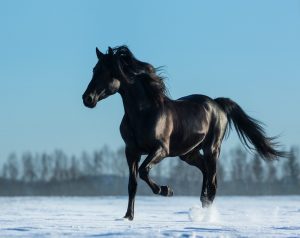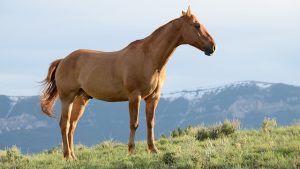When you think about horses, what coat color pops in your mind? If you’re thinking about a red, bay, or black horse, it’s no surprise since these are the three common base colors where other horse colors stem from. But, there are many different coat colors out there, and they are majestic and eye-pleasing.
The color of the coat of the horse depends upon genetics, just like the human hair, and our eye color. In this article, we’ll share 21 amazing horse colors that are unbelievably beautiful. Let’s jump right in to find out.
1. Bay
It is the most common color in many horse breeds since it is the base color. Bay horses have brown bodies with a black point coloration in the mane, tail, rims around the ears, muzzles, and lower legs.
2. Black
A real black horse has brown eyes, pure black skin, and black hair coats. It has no areas of permanently reddish or brown hair, yet sometimes, it has a blue hue on its coat. Though it is not considered rare, this color is uncommon among horse breeds. There are two types of black:
- Fading black – Its black color fades to a brownish color if the horse is regularly exposed to sunlight.
- Non-fading black – It has a blue-black shade that does not fade in the sun.
3. Chestnut
A chestnut horse has reddish-to-brown hair with flaxen manes and tails, which are lighter than the coats. It can range from light or sorrel to the liver dark. It is different from the bay, and the easiest way to distinguish the difference between the two is that bay horses have black on its lower legs, mane, and tail, or both while a chestnut doesn’t have black in its body, mane, and tail.
4. Brown
Brown horses showcase a dark brown coat or dark seal color, with black points in its lower legs, tail, and mane, and a lighter brown or reddish tan areas around the eyes, muzzle, behind the elbows and in front of the stifle.
5. Dun
Dun horses have a creamy golden color with black mane and tail and have a distinctive dark dorsal stripe. Dun horses come with many shades, but they all exhibit the characteristic of primitive dun factors, which include the dorsal stripe, leg-baring, or the horizontal striping on legs, ear frames (dark-tipped ears), face masking (dark points on the face). It also features blade stripes on shoulders, frosting (light hairs) in the mane and tail, and cob webbing throughout the coat. Its color can vary from the bay dun or zebra dun, red dun, which has a red or chestnut mane and tail, and a blue dun, which is also called grulla.
6. Buckskin
Buckskin horses range from a creamy golden to rich golden color with black points in the legs and ears, mane, and tail. They are unique from the similarly colored zebra or “classic” dun because it does not feature a dun factor.
7. Palomino
Palomino horses feature golden coats with creamy white manes and tails. The base coat of Palominos can range from a pale yellow color to a rich gold.
8. Gray
White horses are rare, and most of the white horses are really a light gray. Gray horses are mostly born as bay, chestnut, palomino, or dun and become lighter until it turns to gray over time. The gray coat is due to its white and slightly colored hairs. Gray horses range from white to dark gray, and the light gray can be distinguished from others through the presence of the dark-pigmented skin. Gray foal horses are often born otherwise solid with “gray goggle,” which is slightly graying around the eyes.
9. Roan
Roan pattern, also called as varnish, is characterized by white hair ticking throughout the base coats. They are born with their coat color and remain the same over time. Roans have different base colors, which include strawberry (bay), red (chestnut), and blue (black). These are the well-known variation of roan:
- Blue roan – it has a dark base color with white hairs mixed in with dark points and black undertones.
- Red roan – has a chestnut base color with white hairs mixed in and some red or dark red/brown coloration. Their mane and tail are either red or blonde.
10. Appaloosa
Appaloosa patterns have several colors and spotting and blanket variations. It has many coat patterns that include but not limited to, the following:
- Blanket Appaloosa – boasts a distinct white marking scattered across the rump, which may or may not contain spots.
- Leopard Appaloosa – has distinguishing leopard-like spots over a white coat.
- Appaloosa roans – This pattern is unique from traditional roans for its snowflake blanket and ever-changing appearance.
- Few spots – as the name suggests, these horses are blanketed or covered but have “few spots”.
11. Pinto
Pinto horses look like someone has splashed white paint over its colored coating, or someone painted the white base with other colors. That is why it has large patches that are larger than Appaloosa’s spots. Different genes control the paint and pinto spot, and it comes in a range of colors and combinations.
12. Dark Bay
Similar to a bay horse, the dark bay has a brown coat with black mane, tail, and points, but its base coat is more dark-colored than the usual bay. It can even be mistaken as black. But it has lighter points around its muzzle and flank and under its forelegs, which makes it distinct.
13. Sorrel
Sorrel is simply a variation of the chestnut color, but its reddish hue in its coat makes it distinct. It has light reddish/yellow color, and its mane and tail are either blonde or the same as the body. In Europe, it is known as light chestnut, but in America, it is called sorrel.
14. Cremello
A cremello horse has very pale coats, mane, and tail with unique blue or amber-colored eyes.
15. Overo
It is a white coat pattern that comes from the belly, and it can be combined with any color to produce a colored horse.
16. Cream
The cream color comes from the “cream” gene, which dilutes the base colors like chestnut, bay, and black. When it weakens the palomino or buckskin color in it, it gets even lighter.
17. Dapple Gray
Dapple gray has a gray base with white marks splattered throughout the coat. If a dapple gray has black points, you can call it blue roan as well.
18. Grullo
Grullo horses have Dun overlay on black, mousy color, and it has a dorsal stripe, with zebra stripes (bars) on the legs, or a mask (dark face).
19. Tobiano
This color features a spotted color pattern with white hair and pink skin patches in its base coat color. It is commonly seen in Pinto horses and produced by a dominant gene. You can identify tobianos because it doesn’t have extreme facial white; instead, it has a solid-colored head and white legs.
20. Skewbald
It is the term used to describe a horse of any color other than black that showcases overo or tobiano pattern or a combination of the two (tovero).
21. Piebald
It is a horse that has black color with overo or tobiano pattern or tovero (a spotted blend of overo and tobiano).





